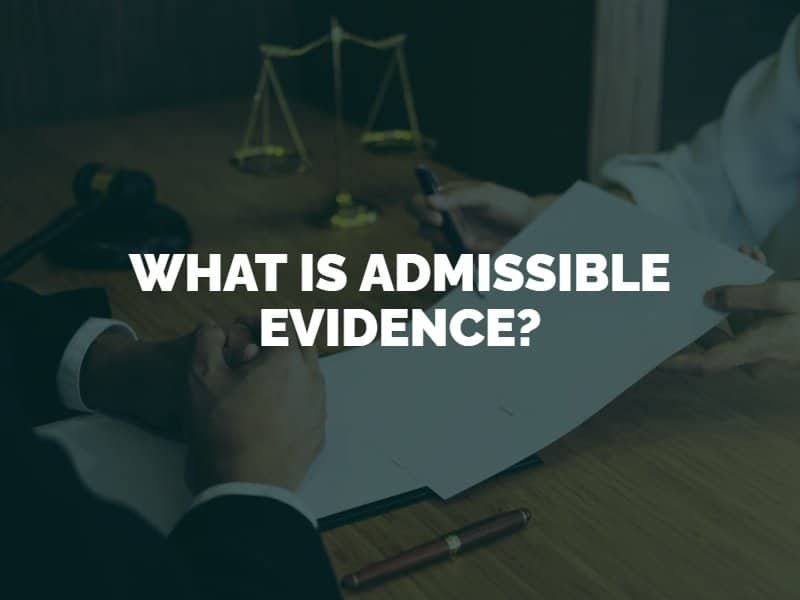All court cases involve parties showcasing evidence to prove their side. To ensure that trials are fair, only certain kinds of evidence are considered “admissible.” In general, admissible evidence is anything that is relevant to the case, material, and competent. Therefore, if you have evidence of your claim that does not fall into all three of these categories, that evidence may not be admissible to the courts.
Before consulting with a Denver injury lawyer, it may help to learn what types of evidence are considered admissible. Here is more information about admissible evidence.

As stated previously, admissible evidence must be relevant to the claim, material, and competent. Relevance is defined by the piece of evidence’s ability to prove or disprove a specific fact related to the claim. After relevance is determined to be present, the evidence must then be deemed material by being offered as a means of proving a fact that is being disputed through the claim. Finally, the evidence must be considered competent. This involves proving that the evidence is reliable based on the court’s judgment.
There are two primary forms of evidence that can be used in a personal injury case. They include physical evidence and non-physical evidence. Physical evidence often includes photographs of the site where the incident occurred or pictures of your injuries. Non-physical evidence can be a range of things, including witness testimony provided in court, police reports, and medical records.
When a person gets on the stand and responds to questions regarding a claim, they are giving their testimony. This testimony can sometimes be deemed admissible, but there are a number of rules that apply to moderate testimonies. These rules are necessary because, quite often, people who give testimony have bias or memory problems that lessen the accuracy of their statements.
For example, when someone testifies about something that they heard in an area other than the court, that testimony may be classified as “hearsay.” In general, hearsay evidence is inadmissible because it is not seen to be nearly as reliable as statements made under oath in court.
Testimony that speaks to a person’s character features similar issues. When someone tries to claim that a person would or would not do something based solely on their character, their bias or lack of knowledge prevents the evidence from being admissible in many cases. Usually, the testimony must directly identify whether a person really did something or said something.
It can be difficult to build a successful personal injury claim if you do not have certainty that the evidence you plan to use is actually admissible. Having an attorney assess the details of the evidence before you go to trial can help you determine whether the evidence you have will be accepted by the courts. You can start this process by reaching out to Fang Law Firm for a free case evaluation.